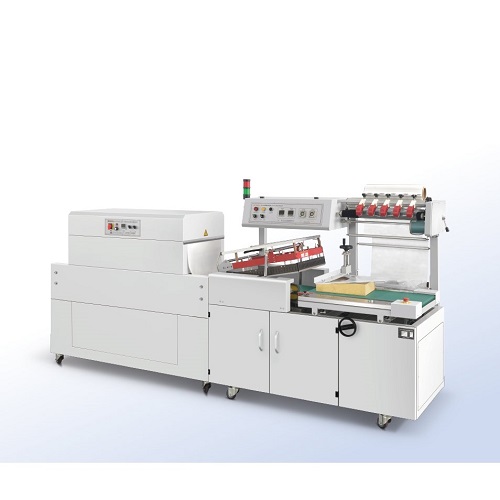Optimizing Packaging for Print Media: A Guide to Shrink Wrapping Notebooks, Files, and Magazines
Efficiently packaging flat items like notebooks, files, and magazines presents unique challenges. Ensuring protection, professional presentation, and cost-effectiveness requires the right equipment. A shrink packaging machine specifically designed for these applications offers a robust solution, creating a tight, clear, and protective wrap around each item or bundle.
1. Understanding the Shrink Packaging Process for Flat Products
Shrink packaging machines automate or semi-automate the process of enclosing products like notebooks, files, or magazines in a polymer shrink film. Heat is then applied, causing the film to shrink snugly around the product. Let's break down the typical workflow:
1.1. Infeed Conveyor System
The process begins with a conveyor system that transports the notebooks, files, or magazines into the packaging station. This ensures a consistent flow and proper positioning for wrapping. Depending on the level of automation, products may be placed manually or fed automatically onto the conveyor.
1.2. Film Dispensing and Preparation
The machine utilizes a roll of shrink film (commonly Polyolefin), mounted on a dispenser. The film is unwound and precisely fed into the wrapping area, often folded or prepared to create a pocket or sleeve for the incoming product.
1.3. Product Loading
Operators, or automated systems, place the items onto the designated loading area of the conveyor, ensuring correct alignment for consistent packaging. For items like magazines or notebooks, consistent orientation is key for a professional finish.
1.4. Film Sealing and Cutting (L-Bar Sealers)
As the product moves into position, it enters the area where the film is applied. Many machines designed for these types of products utilize an L-Bar sealer. This mechanism performs two seals (front/side and trailing edge) simultaneously and cuts the film to create a sealed bag around the product. The product is now fully encased in loose shrink film.

1.5. Heat Application in the Shrink Tunnel
After sealing, the conveyor transports the bagged product into a shrink tunnel. Inside the tunnel, precisely controlled hot air circulates, causing the shrink film to contract tightly around the contours of the notebook, file, or magazine. This creates a secure, tamper-evident, and visually appealing package.
1.6. Precise Temperature and Speed Control
Achieving the perfect shrink requires careful control over the shrink tunnel's temperature and the conveyor's speed. These settings are adjustable to accommodate different film types, thicknesses, and product sensitivities, ensuring the film shrinks correctly without damaging the contents (like paper warping or ink smudging).
1.7. Cooling Zone and Discharge
Finally, the shrink-wrapped package moves through a brief cooling zone. This allows the film to stabilize and harden in its shrunk state, ensuring the wrap remains tight and secure. The finished product is then discharged from the machine, ready for packing or distribution.
2. Benefits of Shrink Wrapping Notebooks, Files, and Magazines
Employing shrink wrap machines for these items offers several advantages:
- Protection: Creates a barrier against dust, moisture, dirt, and handling damage.
- Tamper Evidence: Provides a clear indication if the package has been opened.
- Bundling: Allows multiple items (e.g., a set of notebooks or magazines) to be conveniently grouped.
- Enhanced Presentation: Offers a clean, professional look that showcases the product.
- Versatility: Can handle various sizes and thicknesses with proper machine setup.
- Cost-Effectiveness: Often more economical than boxes or other packaging methods for these types of goods.
3. Choosing the Right Shrink Packaging Machine
Selecting the appropriate machine depends on several factors:
- Production Volume: Manual, semi-automatic, or fully automatic systems cater to different output needs.
- Product Size Range: Ensure the machine's sealing area and tunnel dimensions accommodate your largest and smallest products.
- Speed Requirements: Match the machine's cycles per minute to your production targets.
- Budget: Costs vary significantly based on automation level and features.
- Machine Type: L-Bar sealers (like the referenced FP-250A) are common for these applications, but side sealers might be considered for higher speed or different product flows.
By understanding the process and benefits, businesses can leverage shrink packaging technology to effectively protect and present their notebooks, files, magazines, and similar flat paper products.